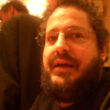Count Zero
Description
More Details
9781101146477
Similar Series From Novelist
Similar Titles From NoveList
Similar Authors From NoveList
Published Reviews
Publisher's Weekly Review
Gibson's first novel, Neuromancer, was greeted with hosannas and showered with awards. This second book, set in the same universe, again offers a faddish, glitzy surface not unlike that of Miami Vice. Gibson's central image is the shadow boxes constructed by the artist Joseph Cornell, collections of seemingly unrelated objects whose juxtaposition creates a new impression. In the same fashion, the novel has three protagonists, each of whom is putting together jigsaw clues in pursuit of his separate goal. The corporate headhunter, the art dealer and the computer hacker all find themselves being manipulatedjust as the author contrives to have their paths converge. This book is less appealing and less verbally skillful than Gibson's first novel, dense and dour as that was, but readers who liked that one will want to see this as well. (March 26) (c) Copyright PWxyz, LLC. All rights reserved
Kirkus Book Review
Something like a cross between Gibson's hugely successful debut, Neuromancer (paperback only), and his short story about futuristic corporate dirty tricks, ""New Rose Hotel."" We're in a high-tech near-future of linked super-computers; this matrix has given rise to ""cyberspace,"" an ""inner"" space something like a three-dimensional video display (cf. the movie Tron); the world is dominated by multinational corporations, plus a few fabulously rich individuals, and the cutthroat competition between them. The three plot lines here eventually intertwine. Mercenary Turner, hired by corporate giant Hosaka to pry bioengineering whiz Mitchell away from Maas biolabs, is double-crossed--but manages to escape with Mitchell's daughter Angie, who has a weird biocomputer inside her head, giving her immediate access to cyberspace. Elsewhere, amateur computer jockey Bobby (a.k.a. Count Zero) is hired to test a bootleg biochip; the operation nearly kills him, so he seeks refuge with some dudes who take their orders from voodoo gods--insisting that said gods are a manifestation of cyberspace. Meanwhile, former art gallery owner Marly (she lost everything for unwittingly displaying fakes) is contacted by rich, mad old Virek (his body is riddled with cancer, so he appears only in cyberspace), who hopes that Marly will lead him to a mysterious Someone who has the know-how to grow Virek a new body. The plot doesn't always add up, and the characters resemble computer programs; still, it's fast moving, often gripping, and not a little slick. However, the ideas that gave Neuromancer its sparkle are, here, just about played out. Copyright ©Kirkus Reviews, used with permission.




































